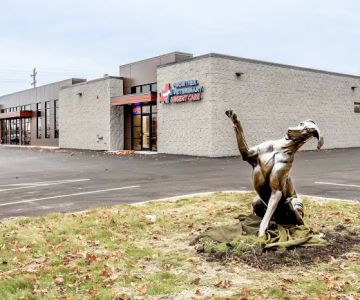1. Introduction: The Importance of Senior Dog Care
As dogs age, they require more specialized care to ensure they stay comfortable, happy, and healthy. Senior dogs are prone to a variety of health issues that can affect their quality of life, which is why it’s crucial to provide them with extra attention. In this article, we will explore how to care for senior dogs by addressing their unique needs, common health problems, and tips for maintaining their vitality in their golden years.
2. Understanding the Health Needs of Senior Dogs
Senior dogs, typically those aged seven or older, experience a variety of changes that require a different approach to their care. As they age, dogs become more susceptible to arthritis, vision and hearing loss, and cognitive decline. Understanding these health needs and addressing them proactively can make a significant difference in your dog’s well-being.
1. Regular Veterinary Check-ups
Regular veterinary visits are essential for monitoring a senior dog’s health. These check-ups often include blood tests, joint evaluations, and screenings for common senior dog conditions like heart disease, kidney issues, or dental problems. Early detection can prevent or alleviate some of the discomforts associated with aging.
2. Joint Health and Mobility
Arthritis and joint pain are common among senior dogs, making mobility more difficult. Regular vet check-ups can help determine the severity of these issues, and in some cases, physical therapy, joint supplements, or medications can help improve their quality of life.
3. Proper Nutrition for Senior Dogs
Proper nutrition is a cornerstone of senior dog care. As dogs age, their dietary needs change. Senior dogs often require fewer calories but higher-quality nutrients to support their aging bodies.
1. Tailored Diets for Senior Dogs
Choose a high-quality senior dog food that contains the appropriate balance of protein, fat, and fiber. Senior dog foods are often lower in calories but higher in fiber to support digestive health. They may also contain added vitamins and minerals to support joint health, immunity, and cognitive function.
2. Weight Management
Obesity can exacerbate many senior dog health problems, particularly joint pain. It’s important to manage your senior dog’s weight through proper portion control and regular exercise. If your dog is overweight, consult your veterinarian for advice on an appropriate weight loss plan.
4. Exercise and Mental Stimulation for Older Dogs
Even senior dogs need exercise to stay healthy, but it’s essential to adjust their activity level according to their physical condition. Regular exercise can help maintain mobility, manage weight, and provide mental stimulation, which is crucial for preventing cognitive decline.
1. Low-Impact Activities
Gentle walks and low-impact activities like swimming can help keep your senior dog fit without putting too much stress on their joints. Avoid high-impact activities, such as running or jumping, which could cause injury or discomfort in older dogs.
2. Mental Stimulation
Just as physical exercise is important, mental stimulation plays a key role in maintaining your senior dog’s brain health. Puzzle toys, basic obedience training, and interactive games can help keep their mind sharp and engaged.
5. Common Health Issues in Senior Dogs
1. Arthritis and Joint Pain
Arthritis is one of the most common health issues in senior dogs. Symptoms include stiffness, difficulty getting up, and limping. There are several treatments available, including joint supplements (such as glucosamine), pain medication, and physical therapy.
2. Dental Problems
Dental health often declines with age, and senior dogs are particularly prone to gum disease, tooth decay, and bad breath. Regular dental check-ups and cleaning are crucial for preventing infections and other health issues related to poor oral hygiene.
3. Vision and Hearing Loss
Many senior dogs experience a decline in vision or hearing. While some degree of vision or hearing loss is a normal part of aging, it can lead to confusion or anxiety. Providing a consistent environment and using clear, gentle commands can help your senior dog adjust to these changes.
6. Real-Life Story: How Proper Care Transformed a Senior Dog’s Life
Meet Bella, a 10-year-old Labrador who had become sluggish and unresponsive after a few years of joint pain and dental issues. Her owner, Sarah, noticed that Bella was struggling to get up and wasn’t as active as she once was. After switching Bella to a senior-specific diet and adding joint supplements, Sarah also arranged for regular vet visits and gentle daily walks. Bella’s energy improved, and after a dental cleaning procedure, her appetite and overall mood lifted. Now, Bella is living a much more comfortable and joyful life in her golden years.
8. Conclusion: Ensuring Your Senior Dog’s Comfort and Happiness
Providing proper care for senior dogs involves a combination of regular veterinary visits, proper nutrition, and exercise tailored to their needs. By addressing their health concerns early and ensuring they receive the right treatments, you can help your senior dog live a longer, healthier, and happier life. To learn more about senior dog care or to schedule a consultation, visit Hidden Brook Veterinary.











